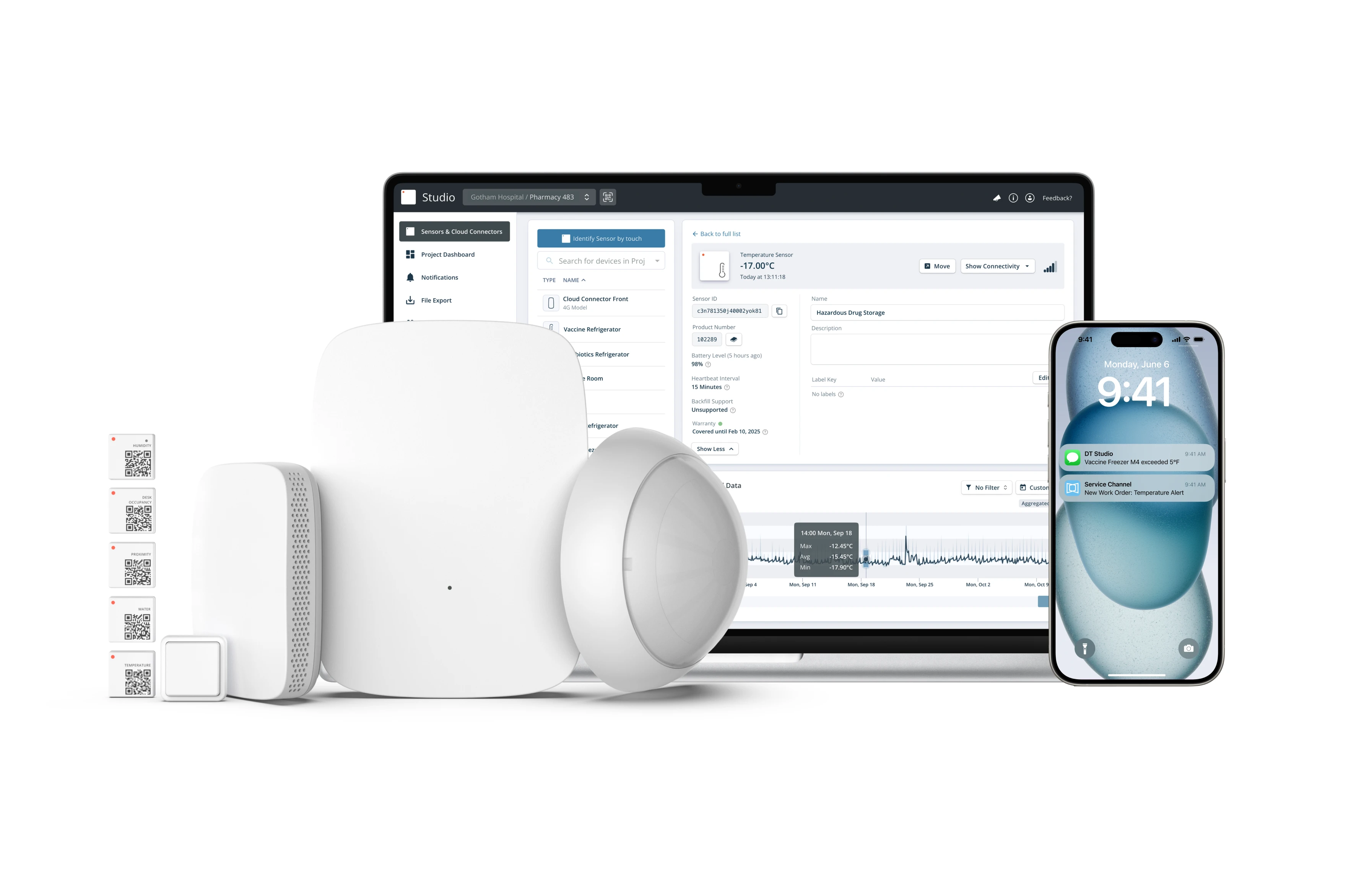What We Have Learned About the Evolving Nature of Workspaces

Two weeks ago, we attended the Tradelines Space Strategies event in Boston, which brought together workplace strategists, designers, and technology providers to discuss and share insight into what is needed to create sustainable workplaces that help employees thrive and businesses grow.
It was exciting to listen to. We heard from an impressive line-up of workplace experts on how they see the future workplace, which led us to consider the role that data from our Disruptive Technologies occupancy sensors can play in shaping the future workplace.
After reflecting, we have compiled a summary of what was discussed and the key areas where IoT sensors can bring value.
1. Purposeful Spaces for Enhanced Collaboration
A recurring theme throughout the conference was the importance of creating purposeful spaces that encourage employee collaboration.
The traditional concept of employees with a fixed workstation is fading, making way for more flexible, collaborative environments. We discussed the obsolescence of the 1:1 desk-to-employee ratio, emphasizing that modern workspaces should be amenity-rich, comfortable, and collaborative.
2. Maximizing Space Value
In his presentation on building the hybrid workplace, Mark Miller, Global Workplace Strategist at Cisco, underlined the cost of real estate for businesses.
When an organization has 70,000 employees like Cisco does, that translates into $18M sqft of real estate, and the energy costs alone are staggering.
Because real estate and the running of office space is such a significant cost for businesses, space optimization is critical. Companies should understand which building areas are underutilized to decide where to downsize, repurpose, or streamline to achieve considerable cost savings.
3. The Permanence of Hybrid Work
It was widely agreed that the hybrid work model is here to stay. The consensus is that employees will be in the office for 2-4 days per week, effectively ending the era of the conventional 5-day office week.
4. Equitable Spaces for All
The buzzword "equitable spaces" was heard throughout the event, emphasizing the need for inclusive space design. What this means is that the modern workplace needs to accommodate individuals with both seen and unseen disabilities, enabling everyone to use the facilities equally.
5. Data-driven Decision-Making
The resounding message at the conference was "Data, Data, Data." Access to reliable data is imperative for making informed decisions regarding space utilization, design, and optimization.
What It Means for Disruptive Technologies
For us at Disruptive Technologies, the discussions held at the Space Strategies conference underscored the evolving nature of workspaces and the critical role of data-driven decision-making. We left the event feeling encouraged that our flexible, scalable IoT sensors offer real value for companies seeking to create more collaborative, inclusive, cost-effective, and flexible workplaces.

For us at Disruptive Technologies, the discussions held at the Space Strategies conference underscored the evolving nature of workspaces and the critical role of data-driven decision-making. We left the event feeling encouraged that our flexible, scalable IoT sensors offer real value for companies seeking to create more collaborative, inclusive, cost-effective, and flexible workplaces.
Our tiny sensors provide valuable insights into space utilization. By monitoring occupancy and activity, organizations can optimize their office environments, moving away from the outdated 1:1 desk-to-employee ratio and accommodating the permanence of hybrid work.
The data from our sensors facilitates smart decisions and empowers companies to remain flexible and adaptive as workplace needs evolve.

The Easy Way To Understand Occupancy
Content That Might Interest You
Get Started



.png)

